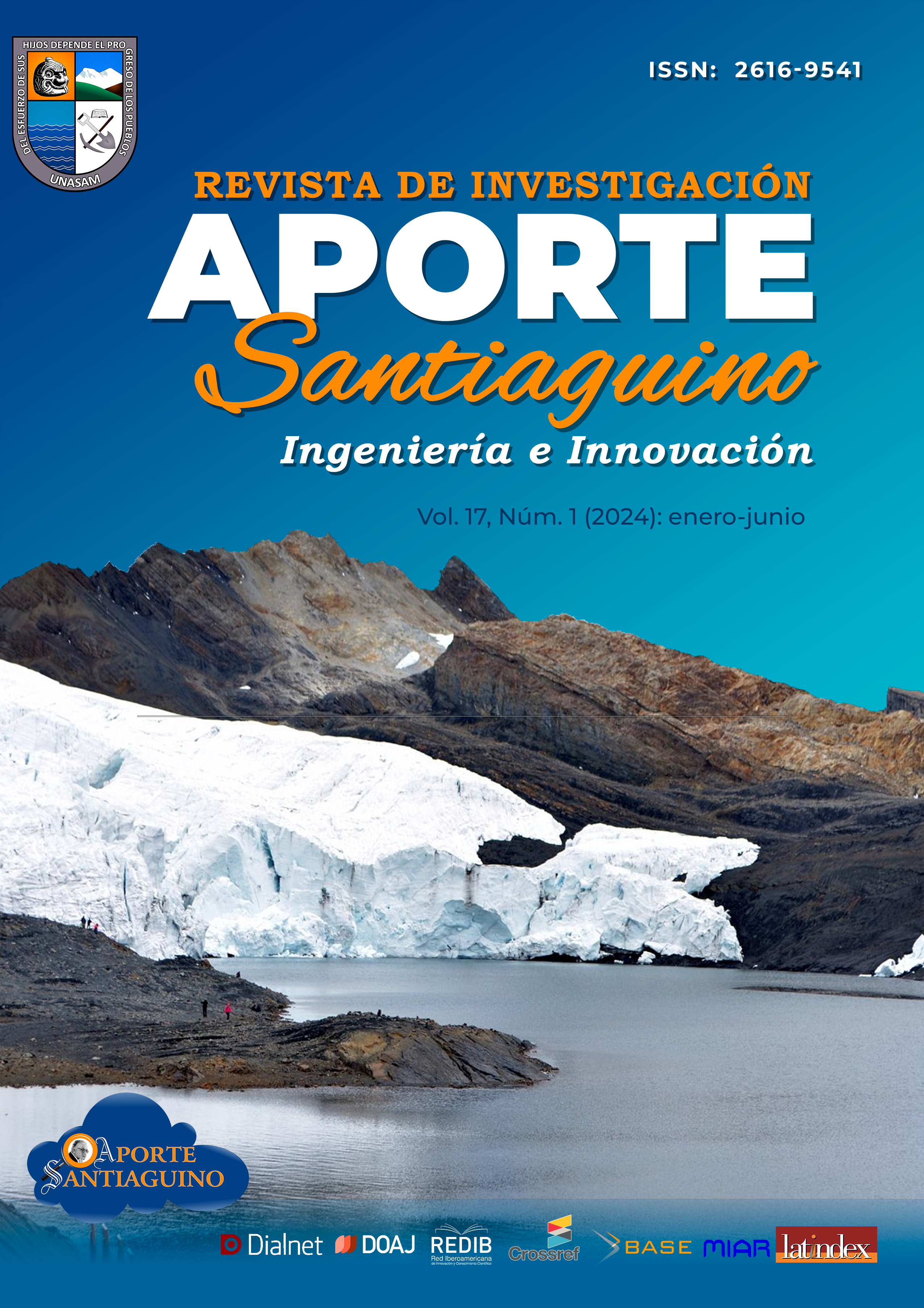Pollution level, quantity and quantity of the surface water in the Pierina mining area-Peru
DOI:
https://doi.org/10.32911/as.2024.v17.n1.1147Keywords:
Pollution, Quantity and quantity of water, Mining zoneAbstract
The purpose was to study the environmental perception of users, authorities, representatives of the people and directors of institutions on the level of contamination, quality and quantity of surface water in the area of direct influence of the Pierina mining company, after almost two decades since it began. its operations. The research is descriptive, non-experimental in design. The survey technique was applied to a sample of 182 water users, ten managers were interviewed and direct observation techniques were used. The results indicate that the contamination level is high/medium for 61.0% and 35.7%, respectively. The water has poor/fair quality, both in its physical (43.4% and 53.3%) and chemical characteristics (59.3% and 40.1%), respectively. During the dry months there is no water availability, the flow in the streams and springs is little/nothing (70.9% and 4.4% respectively). In conclusion, the majority of users perceive that before the arrival of the mining company, the quality of the water was good and in sufficient quantity, but this situation has gradually changed and currently the water is contaminated, is of poor quality and there is small amount, which affects the ecosystem as a whole.
Downloads
References
Arizpe, L., Paz, F., & Velázquez, M. (2008). Cultura y cambio global: percepciones sociales sobre la deforestación en la selva Lacandona. Revista Nueva Antropología, 21(68), 135-136. https://www.researchgate.net/publication/26604931_Resena_de_Cultura_y_cambio_global_percepciones_sociales_sobre_la_desforestacion_en_la_selva_Lacandona_de_Lourdes_Arizpe_Fernanda_Paz_y_Margarita_Velasquez
Autoridad Nacional del Agua (ANA, 2012) Informe técnico N° 016-2012-ANA-DGCRH/RGC; (2013) Informe técnico N° 029-2013-ANA-DGCRH/RGC; (2016) Informe técnico N° 076-2016-ANA-DGCRH-GOCRH - ALA, Huaraz: Dirección de Gestión de Calidad de los Recursos Hídricos.
Centro Nacional de Planeamiento Estratégico (CEPLAN, 2011). Plan Bicentenario: Recursos Naturales. Aprobado por el acuerdo Nacional. https://observatorioplanificacion.cepal.org/sites/default/files/plan/files/plan_bicentenario_ceplan_index.pdf
Daltabuit M., Vargas, L., Santillán, E., & Cisneros, H. (1994). Mujer rural y medio ambiente en la selva Lacandona. Centro Regional de Investigaciones Multidisciplinarias, UNAM. https://libros.crim.unam.mx/index.php/lc/catalog/view/238/375/1014-1
García, A. (2005). Introducción a la psicología ambiental. https://www.monografias.com/trabajos26/psicologia-ambiental/psicologia-ambiental
Ingold, T. (2000). The Perception of the Environment. Essays on Livelihood, Dwelling and Skill. London and New York. https://leiaarqueologia.files.wordpress.com/2017/08/the-perception-of-the-environment-tim-ingold.pdf
Instituto Nacional de Estadística e Informática (INEI) del Perú (2017). Censos Nacionales 2017: XII de Población, VII de Vivienda y III de Comunidades Indígenas. https://www.gob.pe/36495-consultar-informacion-de-los-censos-realizados-por-el-inei-censos-nacionales-de-poblacion-y-vivienda
Lazos, E., & Paré, L. (2016). Miradas indígenas sobre una naturaleza entristecida: percepciones del deterioro ambiental entre nahuas del sur de Veracruz. Repositorio Universitario Digital, Instituto de Investigaciones Sociales. https://ru.iis.sociales.unam.mx/handle/IIS/5075
Minayo, M. (2006). O desafío do conhecimento: Pesquisa qualitativa em saúde. Ciencia y Salud Coletiva 12(4), 1087-1088. https://www.researchgate.net/publication/262739910_O_desafio_do_conhecimento_pesquisa_qualitativa_em_saude
Orozco, C. (2003). Contaminación Ambiental: una visión desde la Química. Ediciones Paraninfo S.A..https://books.google.com.pe/books?id=nUoOx8knyUC&lpg=PA11&hl=es&pg=PA17#v=onepage&q&f=false
Ramírez, R. (2003). La problemática global del agua. https://www.monografias.com/trabajos14/problemadelagua/problemadelagua.shtml.
Scatena, L. (2005). Environmental education; perception environmental of different social group multivariable data analysis as instrument of support management watershed. the Capituva watershed study, Macedônia, SP. Universidade de São Paulo. https://doi.org/10.11606/T.18.2005.tde-15022006-083311
Strauss, A., & Corbin, J. (2002). Bases de la investigación cualitativa. Técnicas y procedimientos para desarrollar la teoría fundamentada. Editorial Universidad de Antioquia https://books.google.com.pe/books?id=TmgvTb4tiR8C&printsec=frontcover&hl=es&source=gbs_ge_summary_r&cad=0#v=onepage&q&f=false
Syme, G., & Nancarrow, B. (2004). Fairness Principles in Allocating Water: Integrating Views of Different Agents. Australian Research Centre for Water in Society. https://www.researchgate.net/publication/240642385_Fairness_Principles_In_Allocating_Water_Integrating_Views_Of_Different_Agents
Valera, S., Pol, E., & Vidal, T. (2002). Elementos básicos de psicología ambiental. Universitat de Barcelona http://www.ub.edu/psicologia_ambiental/psicologia_ambiental
Vargas, M. (2014). Sobre el concepto de percepción. Editorial Alteridades. https://alteridades.izt.uam.mx/index.php/alte/article/view/588
Downloads
Published
How to Cite
Issue
Section
License
Copyright (c) 2024 Einer Gustavo Espinoza Muñoz, Milady Jesus Carbajulca Milla, Henrry Ángel Garrido Angulo

This work is licensed under a Creative Commons Attribution 4.0 International License.




















